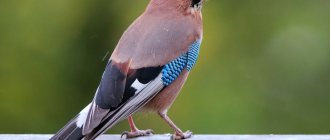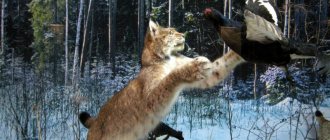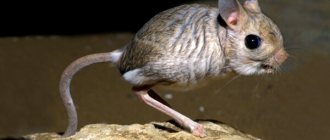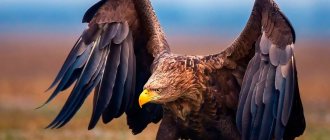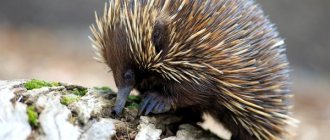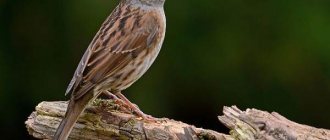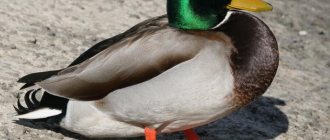- Wild animals
- >>
- Birds
Swifts live in small groups. There are about 100 species, usually grouped into two subfamilies and four tribes. This is the fastest bird in the world, characterized by its dependence on weather conditions. Swift is created for air and freedom. They are found on all continents, with the exception of Antarctica and distant islands, where they have not yet been able to reach. In European folklore, swifts were known as "Devil's Birds" - probably because they are inaccessible and, like owls, they attract more attention.
Origin of the species and description
Photo: Swift
The swift is medium in size, similar in appearance to a swallow, but a little larger. The similarities between these groups are due to convergent evolution, reflecting similar life styles based on catching insects in flight. However, their paths diverged in the distant past. Their closest relatives are New World hummingbirds. The ancients considered them a swallow without legs. The scientific name Apus comes from the ancient Greek α - “without” and πούς - “leg”. The tradition of depicting swifts without legs continued into the Middle Ages, as can be seen from heraldic depictions.
Fun Fact: Swift taxonomy is complex, with genus and species boundaries often disputed. Analysis of behavior and vocalizations is complicated by overall parallel evolution, while analysis of various morphological characters and DNA sequences has yielded ambiguous and partially contradictory results.
The common swift was one of the species described by the Swedish naturalist Carl Linnaeus in 1758 in the tenth edition of his work Systema Naturae. He introduced the binomial name Hirundo apus. The current genus Apus was formed by the Italian naturalist Giovanni Antonio Scopoli in 1777. The predecessor of the Central European subspecies, which lived during the last Ice Age, was described as Apus palapus.
Swifts have very short legs, which are used primarily for grasping vertical surfaces. They never voluntarily land on the ground where they might be in a vulnerable position. During non-breeding periods, some individuals can spend up to ten months in continuous flight.
What does it look like
The bird is often confused with a swallow. But they have a number of significant differences. Black swifts are more massive, they have a shorter tail, and the vocal accompaniment of the flock is louder. They never fold their wings when flying and often live in urban areas.
The physique of swifts is dense, no sexual deformity has been identified. The average length of the sickle-shaped wings, by which they are recognized, reaches 17 cm, the wingspan is 40–48 cm. The eight secondary flight feathers are 2–3 times shorter than the ten primary ones.
Despite the small size of the beak, the mouth opens wide. This feature is explained by the location of the jaw joints and is associated with the “trawling” of insects in the air.
The forked tail in the form of a fork, consisting of 12 tail feathers, grows up to 8.5 cm. The strong but short legs of brown color end in four fingers facing forward with sharp claws, which is convenient for climbing, but excludes sitting on a branch.
Appearance and features
Photo: Swift in flight
Swifts have a length of 16 to 17 cm and a wingspan of 42 to 48 cm, depending on the age of the specimen. They are black and brown except for the chin and throat, which can be white to cream in color. In addition, the upper part of the flight feathers is pale brown-black compared to the rest of the body. Swifts can also be identified by their moderately forked tail feathers, narrow sickle-shaped wings, and their high-pitched calling sounds. They are often mistaken for swallows. The swift is larger, has a completely different wing shape and flight diagonal than the swallows.
All species in the family Apodidae (swifts) have unique morphological characteristics, a lateral "grasping foot" in which toes one and two oppose toes three and four. This allows regular clippers to attach to areas such as stone walls, chimneys and other vertical surfaces that are inaccessible to other birds. Males and females look the same.
Video: Swift
Individuals show no seasonal or geographic changes. However, it is possible to distinguish juveniles from adults by slight differences in color intensity and uniformity, as juveniles are usually blacker in color, have white-fringed forehead feathers, and a white patch under the beak. These differences are best observed at close range. They have a short forked tail and very long drooping wings that resemble a crescent moon.
Swifts produce a loud call in two different tones, the highest of which comes from the females. They often form "screaming parties" on summer evenings when 10-20 individuals gather in flight around their nesting site. Large screaming groups form at high altitudes, especially at the end of the breeding season. The purpose of these parties is unclear.
Description of the bird
The swift is a small bird, predominantly gray in color with black and white splashes. Externally, the swift looks a little like a swallow. The body length of the bird is from 10 to 12 cm, the weight of adults is about 140 g. The head is large, the beak is sharp and small, the tail is straight, the wings are curved, long, the legs are weak and short. Rainbow is black.
— Advertising —
Relative to the body, the swift has very short legs, so if the bird is on the ground, then when it tries to take off, its long wings hit the surface of the ground and make it difficult to take off.
The plumage of males and females is the same, monochromatic, dark, occasionally with a metallic tint.
The swift's flight is characterized by very high speeds; some species are capable of reaching speeds of up to 120 km/h and higher. Swifts also have an unstable body temperature, like most species of birds, so in the event of a sharp cold snap, swifts fall into torpor, a short hibernation.
Where does the swift live?
Photo: Swift bird
Swifts live on all continents except Antarctica, but not in the far north, large deserts or oceanic islands. Common swifts (Apus apus) can be found in almost every region from Western Europe to East Asia and from northern Scandinavia and Siberia to North Africa, the Himalayas and central China. They live throughout this range during the breeding season and then migrate for the winter months to southern Africa, from Zaire and Tanzania south to Zimbabwe and Mozambique. The summer distribution range extends from Portugal and Ireland in the west to China and Siberia in the east.
They breed in countries such as:
- Portugal;
- Spain;
- Ireland;
- England;
- Morocco;
- Algeria;
- Israel;
- Lebanon;
- Belgium;
- Georgia;
- Syria;
- Türkiye;
- Russia;
- Norway;
- Armenia;
- Finland;
- Ukraine;
- France;
- Germany and other European countries.
Common swifts do not breed on the Indian subcontinent. Most nesting habitat is located in temperate zones where there are suitable trees for nesting and sufficient open space in which to gather food. However, the habitat of swifts becomes tropical for several months after migrating to Africa. These birds prefer areas with trees or buildings with open spaces, as they are able to use vertical surfaces such as stone walls and pipes due to a unique physical adaptation.
How to recognize a swift?
What does the bird look like? The characteristics of its appearance are as follows: middle-aged birds have a darkish-brown color, their neck is whitish, their beak is black, their rump and legs are dark brown. The description can be supplemented by the fact that juveniles are much lighter and have white spots on top of the feathers than young ones.
The bird loves to wander and makes long flights, traveling to the breeding area quite late (for example, in the southern regions of Russia - in April, and in the northern part - in May) and leaving the nests very early. The arrival of a black swift is easy to notice by its strong scream (as if there is a loud screeching around).
Black swifts return late, not like other birds. This is the herald of the full arrival of spring, however, even after its return, cold days sometimes come. Late frost can destroy these delicate creatures.
What does a swift eat?
Photo: Swift
Common swifts are insectivorous birds and feed exclusively on aerial insects and spiders, which they capture with their beaks during flight. The insects are gathered together in the throat with the help of a product from the salivary glands to form a food ball or bolus. Swifts are attracted to swarms of insects as they help them quickly collect enough food. It is estimated that there are an average of 300 insects per bolus. These numbers may vary depending on the abundance and size of prey.
The most commonly consumed insects:
- aphid;
- wasps;
- bees;
- ants;
- beetles;
- spiders;
- flies.
Birds fly with their beaks open, catching prey using quick maneuvers or simply flying quickly. One type of swift can reach a speed of 320 km/h. They often fly near the surface of the water to catch insects flying there. While collecting food for newly hatched chicks, adults deposit beetles in their elastic throat pouch. After the bag is filled, the swift returns to the nest and feeds the young. Young nesting swifts are able to survive for several days without food by lowering their body temperature and metabolic rate.
Interesting fact: Except for the nesting period, swifts spend most of their lives in the air, living on energy obtained from insects caught in flight. They drink, eat, sleep on the wing.
Some individuals fly for 10 months without landing. No other bird spends so much of its life in flight. Their maximum horizontal flight speed is 111.6 km/h. Over the course of their lives, they can cover millions of kilometers.
Types of swifts
There are many varieties in nature. Let us give a brief description of the most common species of this bird.
Black
This species is also called “tower swift.” The color of this bird is characterized by dark brown plumage with a rich green tint. These swifts reach large sizes. The flight speed of this species reaches 111 kilometers per hour.
The black swift lives in the vastness of the European space. You can meet such a bird in the central regions of Asia, in Russia. The bird winters in Thailand and India.
Photo of a black swift
White-belted species
This bird differs from its other relatives in its characteristic color features. On the body in the area between the abdomen and tail, this bird has a wide white belt. The remaining parts of the body, wings, and tail are painted in a classic dark gray color.
These swifts are noisy and have a particularly screeching voice.
The habitat of this species extends to European countries, the USA, New Zealand, and Australia. The bird is also found in Asian countries.
Photo of a white-banded swift
Pale swift
This species of bird is almost no different from the black swift, except, perhaps, in color. The color of the bird is light gray with a brownish belly. If we consider the structure of the bird’s body, we can note a certain stockiness, “heaviness” of characteristic features.
This species is endowed with a bright, shrill voice. If a pale swift flies in the sky, it’s not surprising to hear a booming “vriiii-e” in its performance.
The species lives in the vast expanses of Africa, Southern and Central Europe, and the East.
Features of character and lifestyle
Photo: Black Swift
Swifts are a very sociable bird species. They typically nest, live, migrate and hunt for food in groups throughout the year. Additionally, these birds are unique in their ability to remain aloft for long periods of time. They often spend the entire day on the wing, only landing to feed young chicks or roost at night. Common swifts are estimated to fly at least 560 km per day during the nesting season, demonstrating their stamina and strength, as well as their incredible aerial abilities.
Swifts can also mate and forage for food while in the air. Birds prefer to fly in lower airspace when the weather is bad (cold, windy and/or high humidity), and move to higher airspace when the weather is favorable for prolonged aerial activity.
Interesting fact: In August and September, swifts leave Europe and begin their journey to Africa. Sharp claws are extremely useful during this flight. Although the chicks hatch before migration begins, observations indicate that many young individuals do not survive the long journey.
Swifts can nest in former woodpecker cavities found in forests, for example about 600 nesting birds in Belovezhskaya Pushcha. In addition, swifts have adapted to nesting in artificial areas. They build their nests from airborne material captured in flight and combined with their saliva, in the cavities of buildings, in gaps under window sills and under eaves and inside gables.
Interesting to know
Proximity to humans has given rise to many myths and statements regarding these birds. They are credited with weather prediction, unusual abilities and almost supernatural abilities. Most Popular:
- Swifts sleep in flight
. It is almost impossible to see a swift on the ground, which has given rise to the rumor that swifts supposedly sleep on the fly and never land. In fact, the flyer has nothing to do on the ground - his home is in hollows, under roofs and in the recesses of heights, and food flies in the air. In addition, long wings and short legs make it difficult to take off from a horizontal surface. Birds rest well in their nests at night. - Swallows call (or predict) rain
. The low flight of the flock actually precedes bad weather. But the swallows themselves have nothing to do with this - atmospheric pressure reduces the level of midge crowding, and the birds simply follow the food. - Destroying a swallow's nest means causing a fire
. It’s just a useful superstition that is designed to protect man’s feathered neighbors.
Another myth concerning both types of birds is that they cannot close their mouths. This rumor arose due to the fact that during a hunt, swallows and swifts open their beaks, grabbing insects in flight. But this happens only immediately before capture; at other times, they, like others, fly with their mouths closed.
Social structure and reproduction
Photo: Swift chick
Swifts begin breeding at the age of two and form pairs that can mate for years and return to the same nest and partner year after year. Age at first breeding may vary depending on the availability of nesting sites. The nest consists of grass, leaves, hay, straw and flower petals. Swift colonies contain 30 to 40 nests, reflecting the birds' sociable nature.
Common swifts breed from late April to early May until mid-September when the young fledge. One of the bird's most unique characteristics is its ability to mate in flight, although they can also mate in the nest. Mating occurs every few days after suitable weather arrives. After successful copulation, the female lays one to four white eggs, but the most common clutch size is two eggs. Incubation lasts for 19-20 days. Both parents participate in incubation. After hatching, it may take another 27 to 45 days before the young fledge.
During the first week after hatching, the clutch is heated all day long. During the second week, the parents warm the chicks for about half the day. The rest of the time, they rarely heat the masonry during the day, but almost always cover it at night. Both parents are equally involved in all aspects of raising the chicks.
Interesting Fact: In the event that bad weather persists for a long time or food sources become scarce, the hatchlings have the ability to become semi-torpid, as if going into hibernation, thus reducing the energy requirements of their rapidly growing bodies. This helps them survive on little food for 10-15 days.
The chicks are fed food pellets, consisting of insects collected by the parents during flight and held together by the salivary gland, creating a food bolus. Small chicks share the food bolus among themselves, but as they grow larger, they can swallow an entire food bolus on their own.
Reproduction
Birds are ready to breed from the age of two. By the end of May, the pair builds a cup-shaped nest from feathers, plant fibers, lichen, and bark at a height of at least three meters. The materials are held together by sticky saliva. The work takes at least a week.
The female lays one clutch of two to four eggs, which she incubates in turn with the male for three weeks.
The chicks hatch blind and naked. The fluff appears after a week. After another 7 days, gray downy feathers are formed. The chicks acquire their final attire after a month. But young birds do not fly out of the nest until the primary tail feathers on the wings have finally developed.
The parents regurgitate a partially chewed bolus containing an average of 400 insects into the chicks' throats. The frequency of feeding increases with the number of offspring, but the volume of food decreases.
The timing of departure from the nest depends on external factors. During prolonged bad weather, they increase from 38 days to one and a half months. Having left the care of their parents, the young animals become independent and do not return back.
Natural enemies of swifts
Photo: Swift in the sky
Adult black swifts have few natural enemies due to their extreme flight speeds. There are few documented cases of attacks on these birds. Strategic placement of nests helps swifts prevent attacks from land-based predators. Placing nests in depressions provides cover on top, and when combined with dark skin and downy feathers camouflaging the chicks on top, provides protection from aerial attack. In some cases, easily visible nests have been damaged by humans.
The swifts' unique protective adaptations, developed over centuries, allow the birds to avoid most of their natural predators, including:
- Hobby (Falco Subbuteo);
- hawk (Accipiter);
- common buzzard (Buteo buteo).
Selecting nesting sites on vertical surfaces such as stone walls and chimneys also makes common swifts difficult to hunt due to the difficulty of accessing the nest area. The simple coloring also helps avoid predators, as they are difficult to see when they are not in the air. The vast majority of attacks on swifts involve their eggs, collected by humans until the 21st century.
The black swift is more susceptible to mortality due to harsh environmental conditions. Typical nest placement in damp areas creates potential danger for the chicks. If the baby falls out of the nest prematurely or flies out before it can sustain a long flight, or they may be washed away or their feathers become weighed down by moisture. Nests can be lost due to flash floods.
Population and species status
It is difficult to accurately track the bird population due to the secrecy of nests and the presence of immature individuals in the colony.
Despite this, the vast distribution area maintains numbers and makes it possible to change a nesting site that has become unsuitable as a result of human activity or climatic conditions.
Due to its abundance, the species is not considered vulnerable, has no protected status, and causes the least concern.
Nesting and offspring
As was said, there is a period in the life of a black swift when the bird needs to temporarily say goodbye to its usual love of the sky. We are talking about the nesting period.
Returning from wintering in late April - early May, the birds begin their mating season: they look out for a partner, “establish relationships” with him, collect material for building a nest, and finally perform the “act of love” itself (note that all this is still happening in flight!).
For the nest, everything that is directly accessible is used: feathers, fluff, blades of grass, small twigs, straw, leaves, threads, hair, wool, pieces of fabric, etc.
The bird glues the “building materials” selected in this way with its own saliva (an excellent glue that instantly sets in air no worse than cement), ultimately constructing a kind of round bowl with low (no more than 1 cm) sides.
Important! In the wild, black swifts lived on high cliffs, therefore, having become “city dwellers,” these birds retained their passion for heights. If possible, the bird will happily build a nest at 2000 meters above ground level!
The initially built nest is not very large, its diameter usually does not exceed 9 cm with a tray up to 5 cm, however, in the process of refurbishment and renovation, the “house” can grow to more impressive sizes: up to 15 cm in total diameter with a tray width of 7-8 cm, with a side height of 2-3 cm.
True to its name, the tower swift chooses the upper parts of buildings - roofs, places under eaves, cracks, window frames, and in the wild - tree branches, sometimes hollows, as a place to build a nest.
Black swifts are very careful when choosing a place to build a nest, managing to camouflage it so that the shelter can only be discovered when an adult bird appears nearby.
By the end of May, the female lays eggs (usually no more than two) measuring 26 x 16 mm, white in color and elongated in shape in a freshly built dwelling . The female’s task during this period is to incubate the eggs, and the male’s task is to obtain food for both (however, some scientists claim that birds incubate the eggs alternately).
Chicks are usually born at the beginning of June (incubation lasts three weeks). The young are born without feathers and in the first days are completely helpless, but after a few days the first gray fluff covers the chicks’ bodies.
Important! The black swift, like other birds, is a warm-blooded species.
But still, it has the unique ability to greatly change body temperature depending on environmental conditions, which allows not only chicks, but also adults to fall into a kind of hibernation in particularly cold weather - as a result, the need for energy decreases, and the bird is able to survive.
Parents feed their young for six weeks. Small insects are used as “baby food”, which, with the help of the same miraculous saliva, are glued together into small lumps-briquettes. This allows you to deliver from four hundred to one and a half thousand insects to the nest at a time.
During the day, the bird can bring food to the nest 30-40 times, but it happens that it has to fly far for prey. Interestingly, the cubs can survive without parental care for quite a long time, falling into a kind of suspended animation, accompanied by a decrease in body temperature and slower breathing.
Having survived on the “old supplies” for a week, upon the return of their parents, the kids very quickly make up for lost time through active nutrition.
The innate activity of a small bird leads to the fact that at an early age the chicks very often fall out of the nest, this especially often happens during rain. It is almost impossible to feed such a baby (due to the specifics of the diet), therefore, if there is such a possibility, it is best to return the “prodigal” chick that survived after the fall to the nest (the myth that the parents will not accept it due to the presence of a “human” smell is not true has nothing to do with reality).
Did you know? For several years now, a unique holiday has been held in Jerusalem at the beginning of March, dedicated to the meeting of local tower swifts returning from wintering to the Western Wall and building their nests on it.
Having barely learned to fly, the chicks leave the nest and begin an independent life. In August, they head south along with the entire flock, but do not return with adults the following spring, remaining in warm regions for 2-3 years, until they reach sexual maturity. But, upon returning to their homeland for the first time, they immediately acquire their own offspring.
The black swift is a flocking bird, this applies to both travel and nesting. Usually the number of individuals in a community is several hundred.
Another amazing feature of black swifts is called the word “philopatry” (literally - love for the homeland). These birds always return exactly to the place from which they flew.
